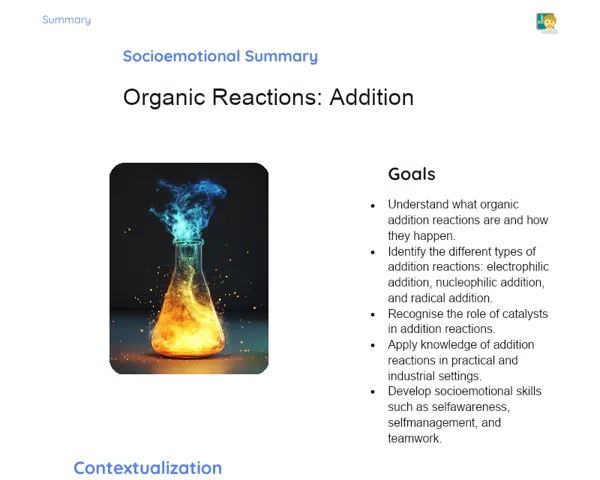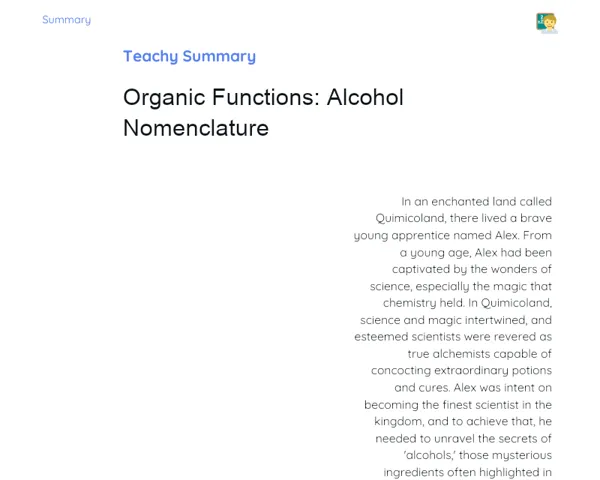Summary Tradisional | Colligative Properties: Cryoscopy
Contextualization
Colligative properties are features of solutions that depend solely on the number of solute particles present, rather than their specific nature. One such property is cryoscopy, which describes how the melting point of a solvent is lowered when a solute is introduced. This phenomenon is commonly observed around us, such as when salt is used on roads during winter to prevent ice from forming, or when antifreeze is added to car radiators to stop the coolant from freezing in cold weather.
Cryoscopy is an essential concept applied in numerous fields, from keeping our roads safe to maintaining our vehicles, thereby preventing freezing-related accidents or damages. To truly grasp this property, it's vital to understand the formula that relates the melting temperature change to solute concentration, along with concepts like cryoscopic constant and molality. Such knowledge allows us to address practical problems and connect theoretical learning to real-world situations, making the application of chemical concepts part of our everyday lives.
To Remember!
Definition of Cryoscopy
Cryoscopy is a colligative property that indicates the reduction of a solvent's melting point upon the addition of a solute. This occurs because solute particles disrupt the formation of the crystalline structure of the solid solvent, requiring a colder environment for the freezing process to occur. Importantly, this effect is related to the quantity of solute particles in the solution, not their identity.
In practical terms, cryoscopy becomes evident when substances like salt are thrown into water. This action drives the freezing point of water lower than its usual temperature, which is particularly beneficial for road maintenance during winter to avoid ice build-up. Additionally, this concept plays a key role in various industrial processes that need precise temperature regulation.
Understanding cryoscopy is crucial for interpreting how solutions react under various conditions, as well as for manipulating these conditions to produce desired outcomes, spanning everything from road safety to developing new antifreeze solutions.
-
Cryoscopy involves the lowering of a solvent's melting point due to solute addition.
-
The phenomenon is based on the number of solute particles, not their properties.
-
Practical applications include salting roads and adding antifreeze to car radiators.
Cryoscopy Formula
The fundamental formula that describes cryoscopy is ΔTf = Kf * m, where ΔTf represents the change in melting temperature, Kf is the cryoscopic constant specific to the solvent, and m stands for the molality of the solution. This equation is invaluable for calculating how much the melting point of a solvent changes when a solute is added, allowing predictions and control of this behaviour across different contexts.
Each solvent has its own cryoscopic constant (Kf) which indicates how much the melting point changes per unit of molality. Different solvents exhibit varied Kf values, meaning that the same quantity of solute can lead to different reductions in the melting point depending on the solvent used. For instance, the cryoscopic constant for water is 1.86 °C·kg/mol.
Molality (m), which measures the concentration of the solute in a solution as moles of solute per kilogram of solvent, is pivotal for figuring out the melting temperature change since cryoscopy is directly related to molality.
-
Cryoscopy formula: ΔTf = Kf * m.
-
Kf is the cryoscopic constant, unique to each solvent.
-
Molality (m) indicates the moles of solute per kilogram of solvent.
Cryoscopic Constant (Kf)
The cryoscopic constant (Kf) is a core aspect of the cryoscopy formula, denoting the change in melting temperature per molality unit. This value is unique for each solvent and is influenced by its physical and chemical characteristics, typically measured in °C·kg/mol.
For example, Kf is 1.86 °C·kg/mol for water and 5.12 °C·kg/mol for benzene. These differences illustrate how various solvents respond to the addition of solutes and how variations in molecular structure impact their melting characteristics.
Grasping the significance of the cryoscopic constant is crucial for effectively applying cryoscopy in various settings, such as creating antifreeze solutions, where selecting the right solvent can significantly enhance the effectiveness of the final product.
-
Kf denotes the change in melting temperature per molality unit.
-
Every solvent has a specific Kf value.
-
Examples: Kf for water is 1.86 °C·kg/mol, Kf for benzene is 5.12 °C·kg/mol.
Molality (m)
Molality (m) serves as a measure of the solute’s concentration in a solution, expressed as moles of solute per kilogram of solvent. Unlike molarity, which is indicated by moles per litre of solution, molality remains unaffected by temperature and pressure changes, making it an especially useful concentration unit in colligative property studies.
To calculate molality, divide the number of moles of solute by the solvent's mass in kilograms. For instance, if you dissolve 10g of NaCl (38.44 g/mol) in 100g of water, the molality of the solution computes as 10g / 58.44g/mol = 0.171 mol; then 0.171 mol / 0.1kg = 1.71 mol/kg.
Understanding molality is fundamental to grasping cryoscopy, as the variation in melting temperature directly correlates with the solution's molality. Therefore, accurately knowing and calculating molality is key to applying cryoscopy effectively.
-
Molality (m) measures solute in moles per kilogram of solvent.
-
It is independent of temperature and pressure, unlike molarity.
-
To calculate, divide moles of solute by the mass of solvent in kilograms.
Practical Example
To illustrate cryoscopy's practical use, consider this example: 10g of NaCl is dissolved in 100g of water. Firstly, we'll find out the solution's molality. The molar mass of NaCl is 58.44 g/mol. This means we have 10g / 58.44g/mol = 0.171 mol of NaCl. Therefore, the molality equals 0.171 mol / 0.1 kg = 1.71 mol/kg.
Using the cryoscopy formula ΔTf = Kf * m, knowing that Kf for water is 1.86 °C·kg/mol, we can calculate the change in melting temperature: ΔTf = 1.86 °C·kg/mol * 1.71 mol/kg = 3.18 °C. This indicates that adding NaCl lowers the melting point of water by 3.18 °C.
This practical example showcases how cryoscopy can predict and manage the melting temperature of solutions, which holds significance for various scenarios, like winter road maintenance and producing antifreeze.
-
Example: 10g of NaCl in 100g of water.
-
Molality calculated as: 1.71 mol/kg.
-
Change in melting temperature: 3.18 °C.
Key Terms
-
Cryoscopy: The reduction of a solvent's melting point due to solute addition.
-
Cryoscopic Constant (Kf): Indicates the change in melting point per unit of molality, unique to each solvent.
-
Molality (m): Concentration of a solute in moles per kilogram of solvent.
-
ΔTf: Change in melting temperature.
Important Conclusions
In this lesson, we delved into cryoscopy, a colligative property that signifies the lowering of a solvent's melting point when a solute is added. We established that this phenomenon depends solely on the number of solute particles in the solution, not their identity. We explored the essential cryoscopy formula (ΔTf = Kf * m), used for calculating the change in melting temperature based on the cryoscopic constant and the solution's molality.
We underscored the importance of Kf and molality in determining the melting temperature's variation. Each solvent has a specific cryoscopic constant that varies according to its physical and chemical attributes. We also showed how to effectively calculate molality, pointing out that it remains independent of temperature and pressure, hence a valuable concentration measurement for studying colligative properties.
Lastly, we applied theory to practice through an example, where we calculated the melting temperature change for an NaCl solution in water. This exercise highlighted how cryoscopy can effectively predict and manage the melting temperature of solutions, stressing its relevance for both everyday scenarios and industrial applications, including road maintenance in cold weather and antifreeze creation.
Study Tips
-
Review the cryoscopy formula (ΔTf = Kf * m) and practice with various solutes and solvents to bolster your understanding of the concept.
-
Look into other colligative properties, like ebullioscopy, osmometry, and tonometry, for a broader perspective on solution behaviours.
-
Explore practical examples and real-life applications of cryoscopy, such as salt usage on roads and antifreeze, to reinforce how these concepts play out in everyday life.


